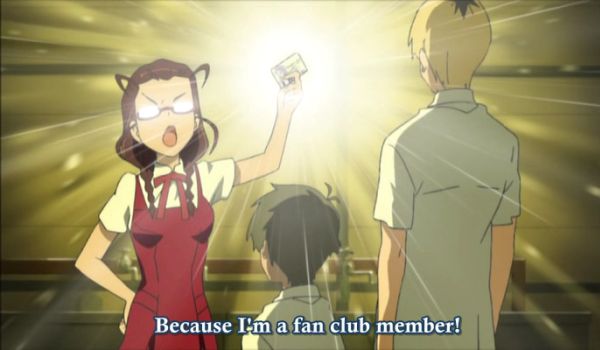Thursday 16 October 2008

|
Pic of the day: Still a fan club member, I guess. I even bought the original program (Supermemo) by which this free open-source program was inspired into being. (I still use Mnemosyne though and prefer it.) Even so... Mnemosyne 2 months reviewFrom my glowing review one month ago, you would think that this little piece of software was a kind of cheat code or hack to the game of Real Life. Well, I am less impressed now, but still impressed. The promise of retaining 90% of anything you decide to learn is probably realistic enough, but that is not the number I see right now. I'd say more like 70% on the kanji I review daily. OK, 80% some days. But well below the numbers I saw last month. There is a reason for this, of course, but it is still disappointing. Last month at this time, I had memorized the hiragana, the most common "alphabet" in Japanese. (Actually a syllabic script, while the alphabet is morphemic. Luckily Japanese has fairly few syllables, compared with European languages, so you only need around 50 of them.) After the hiragana, I started on the kanji, learning them in the order Japanese children learn them in school. (I haven't actually been in a Japanese school, but the Japanese woman who teaches these things at about.com presumably has.) Now even first-grade kanji are (with a couple exceptions) more complex than our characters. But only a little more. I didn't realize until I came to the second-grade kanji that, yes, they did pick the easiest first. And the very first are quite different from each other. Later on you will get kanji that look strangely similar to other kanji, or even are part of another kanji or the other way around. Well, that's where I am now. Each time I learn a new kanji, there is a chance that it will be similar to one I know from before, and so introduce a new confusion into what I thought I had already learned. In addition, each time the example words contain kanji I have already learned, I will learn the word as well. At first I only focused on the meaning of the word, not caring much about pronunciation. After all, I want to read Japanese, not speak it. But somehow my ambition must have been adjusted upward, for I began noting the pronunciation separately. (The English phrase "I've upped my standards, now up yours" comes to mind.) So yeah, I'm failing a lot more now. But it is not entirely the program's fault. It also stems from me increasing the work it has to do. And, more important, the work my brain has to do. In response to this, I have changed my input policy. I started with 1 kanji a day, but increased this to 3, plus any words that showed up. Now I am using the function that shows how many items are scheduled for the next day. I try to keep the next couple days around 20. If I fail a kanji, it will show up for repetition the next day or the day after. (It will also come up again the same day until I get it right, I cannot get a blank page otherwise.) So the more I fail, the fewer new words I learn that day. This seems to work well enough. I may increase that load from 20 to 30 perhaps, but being in second grade after two months isn't all that bad to begin with, for a gaijin (foreigner, literally "outside person" - and yes, I do recognize the word when I see it spelled with kanji). ^_^ |
Yesterday <-- This month --> Tomorrow?